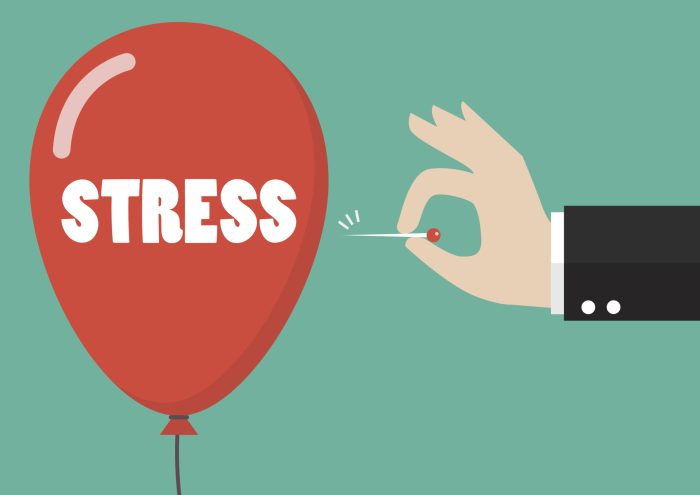November 2023
Stress is a common part of life, and it can affect people in various ways. For individuals diagnosed with scoliosis, a 3-dimensional spinal condition characterized by an abnormal curvatures, stress can take on a unique significance. When diagnosed in children, this stress can impact not only the child, already dealing with growth and pubertal emotions but, also the family who may be creating undue stress on themselves with “how could I not have noticed” or “how could I have avoided this” questions. This article explores the relationship between stress and scoliosis diagnosis, shedding light on how stress can influence both the development and management of scoliosis as well as some answers to help reduce those self-imposed stresses and self-blame that can creep in.
Understanding Scoliosis
Scoliosis is a musculoskeletal disorder that affects the spine on all 3 planes of movement. It typically emerges during adolescence, but it can also develop in adulthood. While the exact cause of scoliosis remains uncertain in many cases, factors like genetics, neuromuscular conditions, and connective tissue disorders can contribute to its development. For 8/10 cases in children, the cause is known as IDIOPATHIC. This means that nothing has specifically caused it which also means that nothing could have specifically been done to prevent it. There are some things which can help us to monitor it in our children which means that it can be diagnosed early. When diagnosed early, the options are much more abundant to be able to control and limit its affect on the individual’s life.
The Connection between Stress and Scoliosis Diagnosis
1. Early Detection: Stress can play a role in the early detection of scoliosis. Adolescents (females 6:1) experiencing growth spurts may be more susceptible to the condition, and stress can affect how their posture and muscle tension impacts their spine’s symmetrical growth, potentially exacerbating any pre-existing spinal irregularities. Make sure your children are getting a Forward Bend test done every year (especially between the ages of 10-14) from a health care specialist such as a school nurse, your pediatrician or a scoliosis-certified physical therapist.
2. Be aware of Familial history of scoliosis: Though scoliosis is not considered to have a genetic component to it (where it would be found consistently), there is a strong family history component. This means that if you or a close family member has been diagnosed with scoliosis, there is a higher probability that your child may also be at risk for developing it.
3. Mental Health Impact: A scoliosis diagnosis can be emotionally challenging for both patients and their families. The stress and anxiety associated with the diagnosis, and especially brace wear, can influence a patient’s overall sense of self-esteem and well-being. It is crucial to address the mental health aspect of scoliosis, as managing stress can positively impact the patient’s experience. Support webinars such as those held by Scolios-Us. – The Empower Hour – are valuable options to making sure stress levels stay under control to enhance a child’s journey through their adolescence.
4. Progression of the Condition: Stress may exacerbate the progression of scoliosis. When a person with scoliosis experiences physical or emotional stress, it can lead to muscle tension, postural changes, and pain, all of which can contribute to the worsening of the spinal curvature, more sedentary lifestyle and postural collapse.
Managing Stress in Scoliosis Patients
1. Emotional Support: It’s essential for patients diagnosed with scoliosis to receive emotional support from family, friends, and healthcare professionals. A strong support system can help alleviate stress and improve the overall quality of life.
2. Pain Management: Stress can heighten the perception of pain associated with scoliosis. Effective pain management strategies including scoliosis-specific physical therapy, pain-relief solutions if needed, proper postural alignment, 4-6 hours of physical activity per week and management of book-bag weight (for kids), can help mitigate the impact of stress on the condition.
3. Coping Strategies: Patients can benefit from learning coping strategies to deal with the emotional stress that comes with a scoliosis diagnosis. Techniques like mindfulness, meditation, and counseling can be effective in managing stress and improving mental health. The Empower Hour
4. Monitoring and Treatment: Once diagnosed, it is important to check in with your pediatrician or scoliosis-certified physical therapist for regular check-ups, imaging every 3-6 months and monitoring of growth to be able to minimize the progression of scoliosis while constantly determining age and curve-appropriate treatment options. Early intervention can help prevent the condition from worsening, reducing stress levels associated with scoliosis.

In conclusion: Stress and scoliosis diagnosis are undeniably interconnected on multiple levels and coped with differently by everyone. While stress can potentially contribute to the progression of scoliosis symptoms and risk for worsening, it can also significantly impact the emotional well-being of those diagnosed with the condition. By understanding this connection and implementing appropriate strategies for stress management, individuals with scoliosis can lead fulfilling lives and effectively manage their condition. With early intervention and diagnosis, you can avoid this becoming a life-altering event but, instead, an opportunity to mitigate a small problem. Remember, all large curves started small! Skilled, scoliosis-specific physical therapy done consistently, changes to postures and consistent physical activity have been shown to positively impact the stabilization and reduction of scoliotic curves while the spine is still growing. If a child’s curve is found to be over 25 deg, bracing and scoliosis-specific PT have shown great outcomes. Though the spine has completed its growth in adults, these same activities become critical to unload the spine and reduce the effects of aging and potential for pain in mature scoliotic spines. Emotional support and proactive management of stress are crucial components in the holistic approach to scoliosis diagnosis and treatment. If you or a member of your family are in need of our services, please feel free to reach out at scolioaustin@icloud.com, http://www.scolioaustin.com or 512-629-4431 to see how we can help you reduce your stress and gain control of your scoliosis diagnosis.


